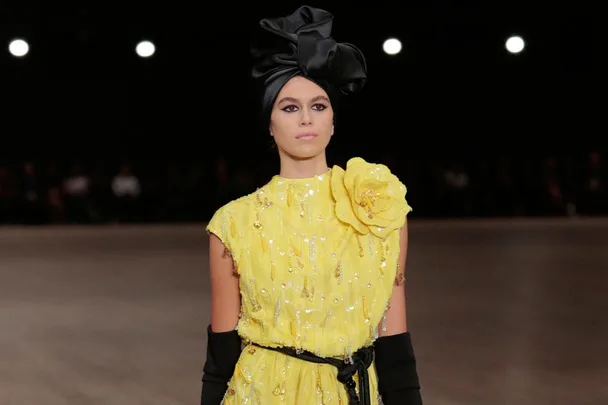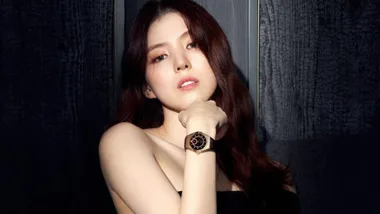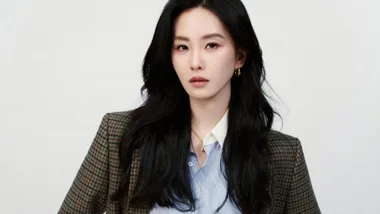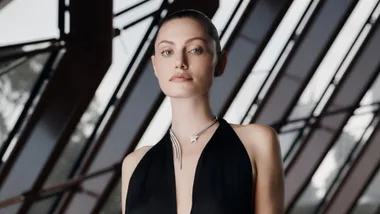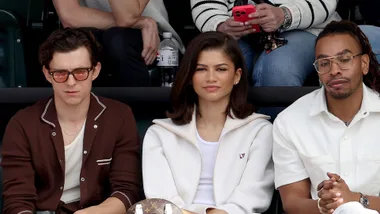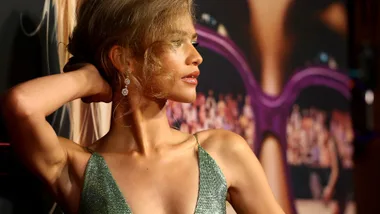Déjà vu, darlings? This time last year Marc Jacobs landed in political hot water at New York fashion week thanks to the hair for his Spring ’17 show.
His line-up of mostly white models, including Bella Hadid and Karlie Kloss, sported candy-coloured faux dreadlocks, styled by Guido Paolo.
Now, many older fashion fans immediately “got” the reference, which was to ‘90s rave culture.
Yours truly remembers when many a New Age white kid at a bush doof sported this very same barnet. They saw it as a symbol of the political counter culture, not an offensive appropriation of black culture. And New Age rave was the look Jacobs nailed, hologram platform boots n’ all. Was he also inspired by black hair culture? If so, he didn’t see any problem with that.
“I respect and am inspired by people and how they look,” said Jacobs in an Instagram post. “I don’t see colour or race – I see people… Appreciation of all and inspiration from anywhere is a beautiful thing.”
But it’s not 1996 anymore. The world has changed. And it’s one of fashion’s jobs to take the temperature of the times. Today, the cultural appropriation conversation is way more advanced than it was when the ravers raved. There are numerous examples of celebrities unwittingly causing offence in this space (think Kardashian cornrows) while designers are being called out for stealing ideas from traditional costumes. Villagers from the Oaxaca region of southern Mexico recently accused Isabel Marant of plagiarising a traditional local blouse design. The message is: get educated, and think carefully before you borrow from other cultures without crediting them.
On Wednesday in New York, Marc Jacobs’ Spring ’18 show saw some critics rolling their eyes again.
This time, Guido Paulo removed the hair from the equation entirely – perhaps not surprising given the uproar 12 months ago. Instead, Jacobs’ exuberant oversized ++ in dazzling brights were accessorised by satin turbans and headwraps, fixed with jewelled pins.
This time, there was no white-wash in the model line-up which presented an inclusive view of beauty. But had Jacobs and his team considered the implications of the white models wearing head wraps?
Turban and turban-style hats have been worn by some of the chicest style icons of all time. To name a few: Marlene Dietrich, Greta Garbo, Liz Tailor, Sophia Loren, Biana Jagger, Pat Cleveland, Kate Moss, Iman…
In the 1920s they were considered glamorous evening-wear, although let’s face it: this trend was cultural appropriation at its finest, spurred by the craze for the Ballets Russes, and designers Leon Bakst and Paul Poiret’s passion for the “exotic East” and what was then called “Orientalism”.
During WWII the turban was commonly adopted by European women seeking to keep their hair out of their face while they took on traditional men’s work on the home front. Then in the ‘70s turbans became the last word in patio dressing chic, worn by everyone from Grace Jones and Yves Saint Laurent’s muse Lou Lou de la Falaise to Princess Margaret.
But in America, the head wrap is highly political. According to American dress historian Helen Bradley Griebel: “During slavery, white overlords imposed its wear as a badge of enslavement! Later it evolved into the stereotype that whites held of the “Black Mammy” servant. The enslaved and their descendants, however, have regarded the headwrap as a helmet of courage that evoked an image of true homeland-be that ancient Africa or the newer homeland, America. The simple head rag worn by millions of enslaved women and their descendants has served as a uniform of communal identity; but at its most elaborate, the African American woman’s headwrap has functioned as a “uniform of rebellion” signifying absolute resistance to loss of self-definition.’
America is currently seeing its cultural divides exaggerated by far-right political influences that are overtly fanning the flames. We all need to be more sensitive and kinder to each other. In this context in particular, fashion needs to check itself.
